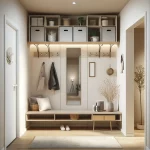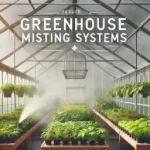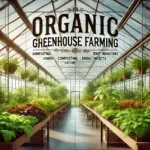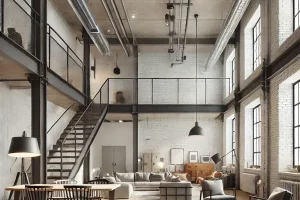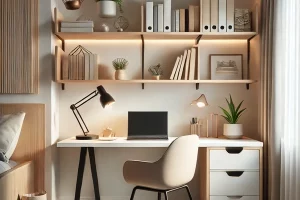Hey there! Let’s talk about a cool way of growing plants called hydroponic greenhouses. Imagine a garden where plants grow without soil. That’s what a hydroponic greenhouse is! Plants get their food and water directly without using dirt.
Why is this cool? Well, it’s like having a superpower for gardening. This method can help plants grow better and faster. But it has its strengths and weaknesses.
We’re going to look at all the hydroponic greenhouse pros and cons to help you understand these awesome greenhouses. Ready to learn about this fun way of gardening? Let’s learn more about it!
What is a hydroponic greenhouse?
A hydroponic greenhouse is a special place where plants grow without soil. They get water and food directly in a controlled environment.
The Story of Hydroponic Greenhouses

A long time ago, even before your grandparents were born, people started growing plants in water instead of soil. This is what we call hydroponics. Ancient people first used the idea in places like the famous Hanging Gardens of Babylon.
Then, during a big war called World War II, soldiers on islands used hydroponics to grow their food because there wasn’t enough soil.
Nowadays, we use cool technology and science to make hydroponics even better. It’s like mixing old ideas with new gadgets to help plants grow in water. That’s the short story of how hydroponic greenhouses became a thing!
Pros of Hydroponic Greenhouses
1. Saving water
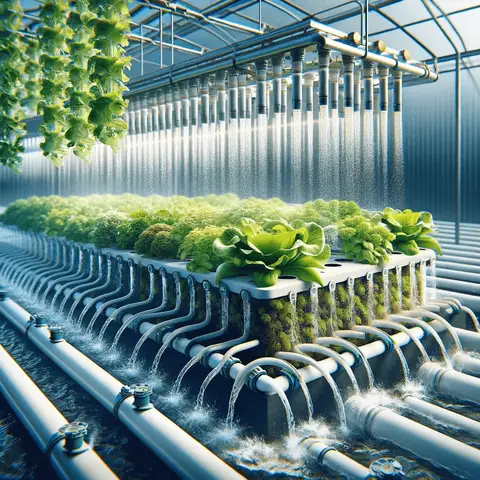
Hydroponic greenhouses are like nature’s superheroes when it comes to saving water. Here, plants sip what they need, and the rest of the water gets recycled. This smart use means almost no water is wasted.
2. Growing More in Less Space
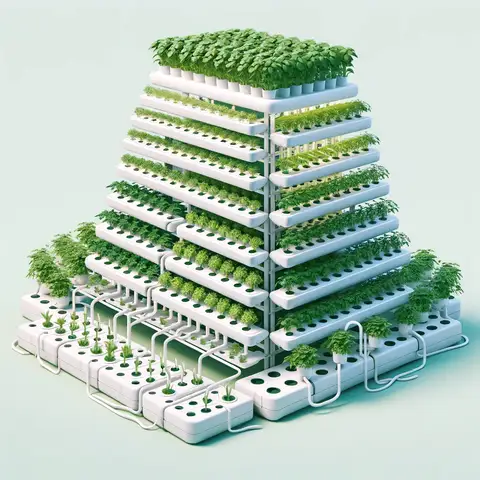
Imagine a puzzle where every piece fits perfectly. That’s how hydroponic greenhouses use space. Plants grow upwards, not outwards, letting you fit a lot more in a small area.
3. Gardening All Year Round
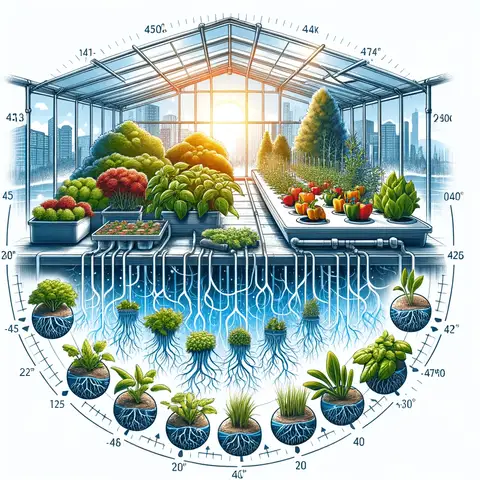
It doesn’t matter if it’s raining, snowing, or super sunny outside. In a hydroponic greenhouse, plants can grow any time of the year. This is awesome because you get fresh veggies and pretty flowers all the time, just like a never-ending garden party!
4. Less Chemicals
In the soil, plants might get sick from bugs and need chemicals to stay healthy. But in hydroponics, this is a small problem. So, plants grow up strong and healthy with fewer chemicals, which is way better for them and us!
5. Faster and Better Nutrient Supply
Plants in hydroponics get their food and vitamins super fast. It’s like they have a direct line for nutrients, making them grow faster and healthier. It’s like giving plants a fast-food service but with all the good and healthy stuff!
6. Easy Gardening
No more digging and getting dirty in the soil. Hydroponic gardening is much easier. You can say goodbye to tough tasks like tilling the soil and pulling out weeds. It’s like having a garden that almost takes care of itself!
7. Zero Weeds
Weeds are a big headache in regular gardening but not in hydroponics. Since there’s no soil, weeds can’t grow. This means less work and healthier plants.
8. Fast Growth
In hydroponic greenhouses, plants grow really fast. Everything they need, like light and food, is just perfect. So they grow quicker than in soil.
Hydroponic greenhouses offer a bunch of cool benefits that make gardening easier, more efficient, and super fun. It’s like giving plants their perfect little world to grow in!
Cons of Hydroponic Greenhouses
1. High Initial Cost:
Starting a hydroponic greenhouse can cost a lot of money. You need special stuff like pumps and tanks to set it up.
2. Waterborne Diseases:
Even though there are fewer bugs in hydroponics, plants can still get sick from diseases in the water. It’s important to keep everything really clean to stop these sneaky diseases from hurting the plants.
3. Requires Expertise:
Hydroponic gardening is different from regular gardening.
4. Requires More Supervision:
Hydroponic plants need you to watch them closely. If something like a pump breaks, the plants could be in trouble quickly.
Hydroponic greenhouses are unique, but they have some challenges, too. It’s like having a cool new game – it’s fun, but you have to learn the rules, and it might cost a bit to get started. But if you’re up for the adventure, it can be really rewarding!
Common Problems in Hydroponic Greenhouses and Solutions
1. Nutrient Imbalances
- How to Fix: Keep an eye on the nutrient levels and adjust them as needed. Use high-quality nutrients and stick to the right amounts.
2. Water and pH Level Issues
- How to Fix: Regularly check the pH of the water and adjust it if it’s too high or low. pH stabilizers can help.
3. Equipment Failures
- How to Fix: Do regular check-ups on your equipment. Keep extra parts handy in case something breaks.
4. Temperature Control
- How to Fix: Use devices like thermostats to keep the temperature just right. Check it often.
5. Pest and Disease Management
- How to Fix: Keep your greenhouse clean and use natural methods to keep pests away. Look out for early signs of plant sickness.
6. Algae Growth
- How to Fix: Stop light from hitting the water with nutrients in it. Clean and change the water in tanks often to prevent algae.
7. Oxygen Levels in Water
- How to Fix: Make sure your water is moving around well, and use things like air pumps to add more oxygen.
8. Monitoring and Adjustments
- How to Fix: Regularly check things like water levels and how healthy your plants look. Adjust things as needed.
Types of hydroponic systems
There are several types of hydroponic systems:
- Nutrient Film Technique (NFT): Plants grow in little channels. A thin water film with plant food flows over their roots. It’s good for plants like lettuce and saves water, too!
- Aeroponics: Plants hang in the air and get misted with water and food. This method is really good at saving water and makes plants grow fast!
- Drip Irrigation: Each plant gets its tiny water drop with food right at the roots. It’s great because you can change it for each plant.
- Deep Water Culture (DWC): Plants float on water, and their roots dip into a deep water tank. It’s easy and great for plants that love lots of water.
- Ebb and Flow: Plants sit in a tray with a special growing material. This gives the plants everything they need.
- Aquaponics: This is like having a fish tank and plant garden together! The fish help give food to the plants, and the plants clean the water for the fish.
- Fogponics: This is a bit like aeroponics, but it uses a fog to give water and food to the plants. It’s really gentle and perfect for plants that need extra care.
Each of these cool ways helps plants grow in water, and you can pick the best one depending on your plants and space!
7 Best Hydroponic Garden Kit for Beginners
Here are seven easy hydroponic kits for beginners:
- AeroGarden Harvest: It’s like a tiny garden on your counter with lights to help plants grow. Great for small veggies and herbs.
- Click and Grow Smart Garden: A small, neat garden that comes with everything you need. Perfect for growing herbs and flowers.
- iDOO Indoor Hydroponics Grow System: Has a light that moves up and down, so lots of different plants can grow.
- VegeBox Table Smart Indoor Garden: Easy to use and good for growing greens and herbs.
- Back to the Roots Water Garden: This is a fish tank and plant garden all in one!
- General Hydroponics Waterfarm Complete: A bit more advanced but great for learning more about growing plants in water.
- Root Farm Hydroponic Garden System: You can grow lots of different plants with this one, and it can get bigger as you learn more.
Each with unique features catering to different needs and preferences in hydroponic gardening.
How to start a hydroponic greenhouse? (DIY guide)
Starting a hydroponic greenhouse involves several steps:
- Learn First: Find out what hydroponic gardening is and pick the plants you want to grow.
- Find the Right Spot: Choose a place for your greenhouse where there’s enough sunlight, and it’s easy to get to.
- Pick Your Hydroponic Type: There are different kinds of hydroponic systems. Choose one that suits your area and the plants you want to grow.
- Get What You Need: Buy or make the parts for your hydroponic system, like water tanks and lights.
- Put It Together: Set up your hydroponic system following the instructions.
- Start Planting: Plant seeds or move small plants into your system.
- Take Care of Your Plants: Regularly check the water, food, and temperature to keep your plants happy.
- Watch for Bugs and Plant Problems: Keep an eye out for pests or sick plants and take care of them quickly.
Remember, growing plants in water is fun, and you’ll learn a lot as you go!
How does a hydroponic greenhouse work?
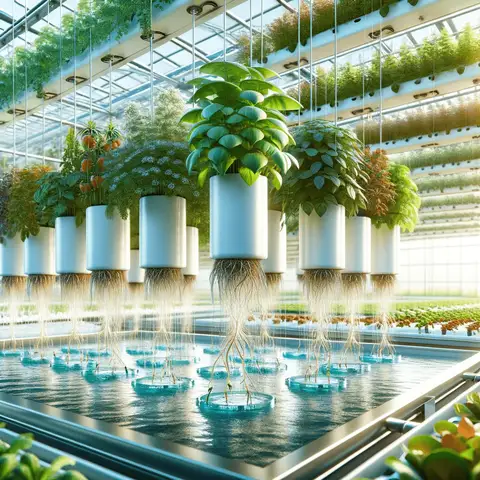
A hydroponic greenhouse works by growing plants in water instead of soil. Here’s how it does this cool job:
- Water System: Plants sit in water with all the food (nutrients) they need.
- No Soil: Instead of soil, plants might be in things like clay pellets or rock wool that help hold them up.
- Light and Heat: The greenhouse uses sunlight or special lights to keep plants warm and help them grow.
- Controlled Environment: It keeps the air and temperature just right for the plants.
- Regular Checks: Someone always checks to make sure the plants have enough water, food, and the right temperature.
How much does a hydroponic system cost?
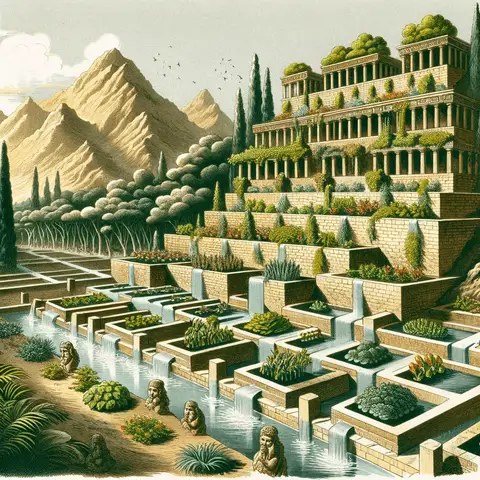
The cost of a hydroponic system can vary a lot. It depends on the size of the system and the type you choose. A small, basic hydroponic setup for your home might cost around $300 to $1000. But, if you want a bigger system for lots of plants, it could cost several hundred or even thousands of dollars.
The price goes up if you add things like advanced lighting, automatic nutrient feeders, and larger water systems. The cost really depends on how big and fancy you want your hydroponic garden to be!
FAQs About Hydroponic Greenhouses
Can you grow any plant in a hydroponic greenhouse?
Most plants can grow in hydroponics, like veggies, herbs, and flowers. But some might need extra care or special settings.
Is it expensive to start a hydroponic greenhouse?
Yes, it can be pricey at first because of the equipment needed, like tanks and pumps. But many people find it’s worth it in the long run.
Do hydroponic plants grow faster than soil plants?
Yes, they often do! Because they get all their nutrients directly and in the perfect amounts, they can grow faster than plants in soil.
Do I need special skills to run a hydroponic greenhouse?
It helps to learn about hydroponics and how to manage the system, but don’t worry – with a little practice, you can get the hang of it!
Are hydroponic plants healthier or more nutritious?
Hydroponic plants can be just as healthy and nutritious as soil-grown plants. They get all the nutrients they need in the hydroponic system.
Can hydroponic greenhouses save water?
Yes, they are great for saving water! They recycle water, so there’s less waste compared to traditional soil gardening.



